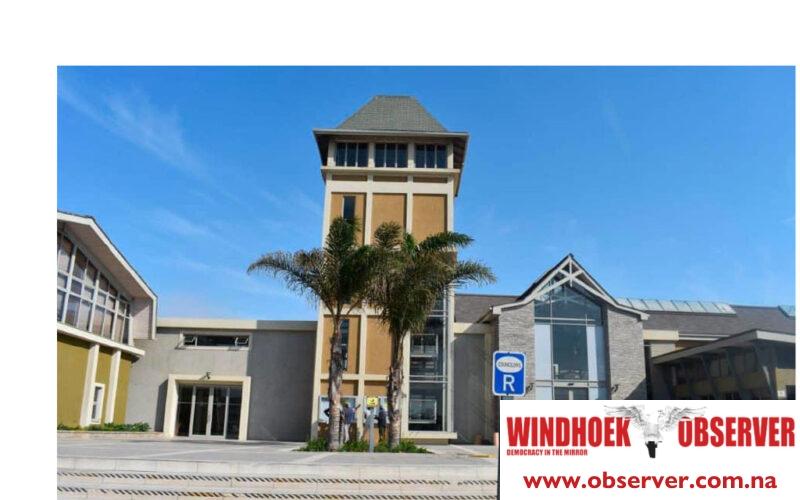Chamwe Kaira
Windhoek’s approved building plans fell by 12% month-on-month, dropping from 226 in September to 198 in October, economic analyst Almandro Jansen of Simonis Storm said.
On an annual basis, approvals were down 19%, showing slow construction activity in the capital. Swakopmund moved in the opposite direction. The coastal town recorded an 80% rebound from 85 to 153 approvals. Year-on-year, it posted a 119% increase, supported by a low 2024 base and stronger sentiment linked to tourism, relocations and future energy-sector activity.
Windhoek remains Namibia’s main growth centre, with an average of 179 approvals per month this year.
“But the sustained rise in Swakopmund shows the emergence of a clear secondary growth pole.”
From January to October, Windhoek received 2 094 building plan submissions, slightly above last year’s 2 069. October saw 286 submissions, a sign of renewed planning before year-end. Swakopmund registered 783 submissions over the same period, far higher than 524 in 2024.
Jansen said this reflects strong investor interest in coastal development.
Despite fewer approvals, Windhoek recorded a sharp rise in the value of approved plans.
Project values increased from N$190 million in September to N$487 million in October, a 156% jump. Jansen linked this to larger commercial and high-density residential projects. So far this year, project values have reached N$2.8 billion, well above the N$1.7 billion recorded over the same period in 2024.
Swakopmund saw a drop in project value from N$102 million to N$75 million in October.
Its year-to-date value stands at N$734 million, compared to N$2.6 billion in 2024. Jansen said last year’s figure is not comparable because it included a few large hospitality and industrial projects.
Construction completions also show a split between the two towns. Windhoek recorded 32 completed projects worth N$34.1 million, slightly higher than September but well below last year’s 79 completions.
Most activity involved additions and alterations, showing cautious spending and a focus on smaller upgrades. Swakopmund delivered 85 completed projects worth N$83 million.
These included 36 new houses, 16 extensions and 36 new flats. This growth reflects rising coastal demand. The FNB House Price Index shows coastal housing prices rising 1.2% on a 12-month average. The average coastal house now costs N$1.48 million, supported by strong buying in the small and medium market.
Foreign demand continues to shape coastal momentum. FNB data shows transaction volumes rising 41.5% year-on-year, with all price segments recording strong gains. The coastal share of national transactions eased to 20% in the third quarter but remains above 2024 levels.
“Lifestyle migration, tourism-linked investment and long-term confidence in Namibia’s coastline are increasingly filtering into construction demand,” Jansen said.
“This momentum will spread to Lüderitz as large green-hydrogen and port projects advance.”
Jansen said the credit environment supports further growth. Simonis Storm expects private sector credit extension (PSCE) growth to rise above 6% for the rest of 2025, moving toward 6.5% to 7% by mid-2026 on the strength of corporate borrowing in mining, logistics and energy.
Jansen expects the repo rate to remain at 6.50% into early 2026, with a possible 25 basis point cut in December 2025, depending on inflation and global policy trends. Lower rates would ease costs for developers and households and may unlock delayed projects.
While Windhoek and Swakopmund lead current statistics, Jansen said Lüderitz is quietly becoming Namibia’s next major construction hub.
The town sits at the centre of major infrastructure work involving NamPower’s grid expansion, NamPort’s harbour upgrades, and the government’s green hydrogen programme.
“These are not short-term real estate cycles,” Jansen said. “They represent an infrastructure-led super-cycle built on energy transmission lines, marine civil works, port expansion, desalination facilities, rail rehabilitation and hydrogen-related industrial sites.”
NamPower’s Obib–Oranjemund line, the N$2 billion Auas–Kokerboom II line, new substations and 94 MW of integrated wind power are creating multi-year work in civil, electrical, and mechanical construction. Namport’s current projects, including staff housing and solar installations, are already producing work. The proposed harbour expansion will bring years of large-scale marine engineering activities.
Green hydrogen development is adding long-term demand for pipelines, storage tanks, ammonia plants, export terminals and new services for the town. The government’s plans for town expansion, industrial zones and rail upgrades highlight Lüderitz’s growing role.




